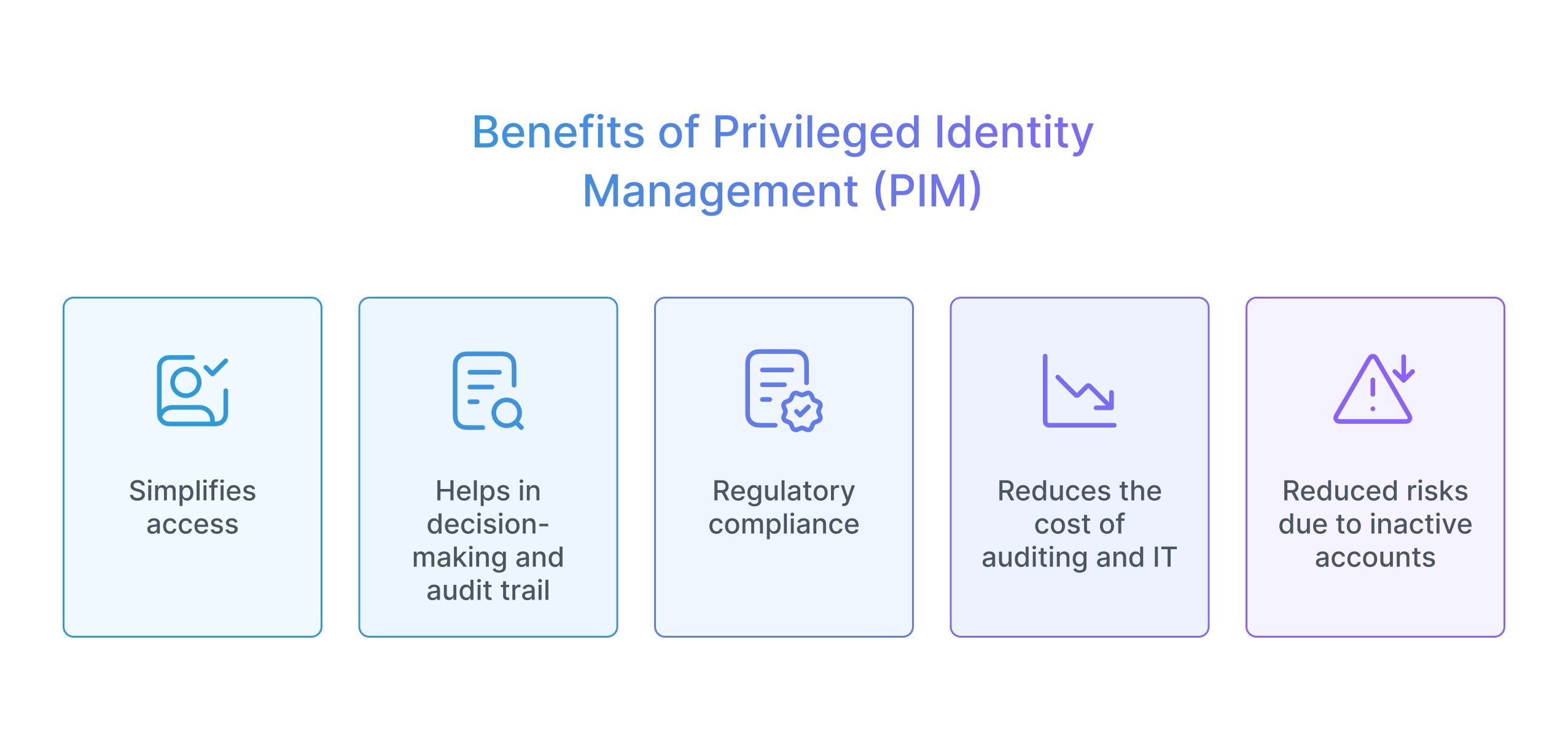Privileged Identity Management (PIM): A Brief Guide

What is Privileged Identity Management (PIM)?
Privileged Identity Management (PIM) enables organizations to manage who (identity) can access what resources within an organization. These resources could include databases, servers, SSH keys, and source code repositories.
A PIM solution acts as a single repository of employees and resources within your organization. And provides a single dashboard for managing what resources any given employee can access.
Features of Privileged Identity Management
Key features of Privileged Identity Management include:
- Limited access to users
- Automatic password generation, rotation, and credential management
- Just-in-time privileged access to resources
- Multi-factor Authentication (MFA)
- Time-bound access to privileged accounts
- Centralized management console such as Adaptive to manage all privileged accounts
- Access evaluations to make sure users still require roles
- Allows users to request privilege elevation for specific tasks
Risks of Unmanaged Privileged Identities
When the size of an organization increases, the number of resources and users increases as well making it difficult to keep track of all the privileged identities. Unmanaged privileged identities pose many high-level risks to organizations such as -
- Unauthorized access to organization's infrastructure and data
- Susceptible to malicious attacks by external threats
- Violations of regulatory compliance requirements
- Exploitation by insider threats
- Lack of accountability for actions taken by privileged users
Overall, unmanaged privileged identities possess risks and be potential threats to any organization’s security posture. Implementing a PIM solution can be of help to manage privileged identities and reduce risks to the organization.
Benefits of Privileged Identity Management

Simplifies access
PIM makes it easier to grant access privileges to specific users within the organization. The privileged users can access resources, request for privilege elevation, and even regain access in case of lost credentials.
Helps in decision-making and audit trail
PIM gives a centralized console to monitor who has access to what resources right now, when was the access granted, and what is the time period for which the user has access to any resource. Furthermore, it provides detailed audit logs giving information about all the activity and changes made by the privileged user.
Regulatory compliance
PIM helps organizations meet the regulatory compliance requirements described by HIPAA, GDPR, SOC 2, etc. These compliance requirements direct organizations to limit access to confidential information to a select few privileged individuals only.
Reduces the cost of auditing and IT
Under PIM, organizations have pre-set frameworks in place to handle all user access requests and grant permissions. This improves IT operation efficiency, streamlines the auditing process with direct reports, and also automates compliance.
Reduced risks due to inactive accounts
PIM involves managing the risk involved with all the privileged accounts and monitoring them across the organization. This helps easily track and revoke access to inactive accounts that can be used by external threats to gain unauthorized access.
Limitations of Privileged Identity Management
Restricting privileges can reduce productivity
Restrictive access to privileged accounts can lead to employees’ reduced productivity and efficiency due to additional steps required to gain access. The delay in access and loss of time will impact the user experience as well.
Forgotten privileged accounts and assets become backdoors to an organization’s infrastructure
As an example, when an employee departs a company, their privileged access to corporate systems and networks needs to be disabled immediately.
Shared credentials complicate attribution, compliance, and auditability
For convenience, teams inside a business, particularly those in IT, frequently exchange privileged credentials like admin accounts for convenience. But it can be difficult for a company to determine who really accessed the resource.
Manual credential management can be a source of costly errors
Scaling of Privileged Identity management across larger companies can be difficult due to the involvement of different departments, hundreds of users, privileged accounts, and their credentials. Manual credential management practice isn’t a great way to manage access in such cases and can be counterproductive and costly for the organization.
Permanently embedded credentials are susceptible to being exposed
A general practice followed by developers to put credentials and other secrets in their codes or files for ease of use can prove to be risky. These files, codes, or scripts can expose credentials to public view if left unsecured.
Privileged Identity Management Implementation
The primary actions you may take to deploy Privileged Identity Management in your business are listed below:
- Evaluate the need for an organization-wide PAM implementation
- Identify persons who will identify suitable PAM solutions and oversee their implementation
- Define organization-wide access policies
- Identify best practices and tools to ensure that defined policies are followed
Differences between IAM, PIM, and PAM
There is plenty of overlap between the functions of IAM, PIM, and PAM, and the terms are used interchangeably. With PIM, the focus is on defining who (identity) can do what. IAM lets us define who can do what and also supports fine-grained permissions using attributes, roles, groups, etc. With PAM the focus broadens to also include who is doing (accessing) what. The latter therefore also involves monitoring and audits.
How Adaptive can help
Adaptive provides seamless infrastructure access to teams and a Privileged Access Management platform for admins in a single product. It includes:
- Privileged Access Management for all infrastructure resources
- Continuous Compliance through auto-compiled audit logs
- Access Policies to proactively protect your organization
Ultimately, controlling access to various resources is crucial for safeguarding a company's expanding infrastructure and Adaptive makes it easy to do so.


 SOC2 Type II
SOC2 Type II